- Home
- Robert Graves
The White Goddess Page 11
The White Goddess Read online
Page 11
The Greeks claimed to remember the date of Zeus’s victory in alliance with the Hecatontocheiroi over the Titans of Thessaly: the well-informed Tatian quotes a calculation by the first-century AD historian Thallus,1 that it took place 322 years before the ten-year siege of Troy. Since the fall of Troy was then confidently dated at 1183 BC, the answer is 1505 BC. If this date is more or less accurate2 the legend probably refers to an extension of Achaean power in Thessaly at the expense of Pelasgian tribes, who were driven off to the north. The story of the Gigantomachia, the fight of the Olympian gods with the giants, probably refers to a similar but much later occasion, when the Greeks found it necessary to subdue the warlike Magnesians in their fastnesses of Pelion and Ossa – apparently because of trouble caused by their exogamic practices which conflicted with the Olympian patriarchal theory and gave them an undeserved reputation as sexual maniacs; it also records Hercules’s charm against the nightmare.
The Achaeans became Cretanized between the seventeenth and fifteenth centuries in the Late Minoan Age, which in Greece is called the Mycenaean, after Mycenae, the capital city of the Atreus dynasty. The Aeolian Greeks invaded Thessaly from the north and were further able to occupy Boeotia and the Western Peloponnese. They settled down amicably with the Achaean Danaans and became known as the Minyans. It is likely that both nations took part in the sack of Cnossos about the year 1400, which ended Cretan sea-power. The reduction of Crete, by now become largely Greek-speaking, resulted in a great expansion of Mycenaean power: conquests in Asia Minor, Phoenicia, Libya and the Aegean islands. About the year 1250 BC a distinction arose between the Achaean Danaans and other less civilized Achaeans from North-western Greece who invaded the Peloponnese, founded a new patriarchal dynasty, repudiated the sovereignty of the Great Goddess, and instituted the familiar Olympian pantheon, ruled over by Zeus, in which gods and goddesses were equally represented. Myths of Zeus’s quarrels with his wife Hera (a name of the Great Goddess), with his brother Poseidon, and with Apollo of Delphi, suggest that the religious revolution was at first strongly resisted by the Danaans and Pelasgians. But a united Greece captured Troy, at the entrance to the Dardanelles, a city which had taken toll of their commerce with the Black Sea and the East. A generation after the fall of Troy, another Indo-European horde pressed down into Asia Minor and Europe – among them the Dorians who invaded Greece, killing, sacking and burning – and a great tide of fugitives was let loose in all directions.
Thus we may, without historical qualms, identify Danu of the Tuatha dé Danaan, who were Bronze Age Pelasgians expelled from Greece in the middle of the second millennium, with the pre-Achaean Goddess Danaë of Argos. Her power extended to Thessaly, and she mothered the early Achaean dynasty called the House of Perseus (more correctly Pterseus, ‘the destroyer’); but by Homer’s time Danaë was masculinized into ‘Danaus, son of Belus’, who was said to have brought his ‘daughters’ to Greece from Libya by way of Egypt, Syria and Rhodes. The names of the three daughters, Linda, Cameira and Ialysa, are evidently titles of the Goddess, who also figures as ‘Lamia, daughter of Belus, a Libyan Queen’. In the well-known legend of the massacre of the sons of Aegyptus on their wedding night the number of these daughters of Danäus, or Danaids, is enlarged from three to fifty, probably because that was the regular number of priestesses in the Argive and Elian colleges of the Mother-goddess cult. The original Danaans may well have come up to the Aegean from Lake Tritonis in Libya (now a salt marsh), by the route given in the legend, though it is unlikely that they were so called until they reached Syria. That the Cottians, who came to Northern Greece from the Black Sea by way of Phrygia and Thrace, were also reckoned as Danaans, proves that they arrived there before the Aeolians, who were not so reckoned. A. B. Cook in his Zeus gives strong reasons for believing that the Graeco-Libyans and the Thraco-Phrygians were related, and that both tribal groups had relatives among the early Cretans.
We may further identify Danu with the Mother-goddess of the Aegean ‘Danuna’, a people who about the year 1200 BC, according to contemporary Egyptian inscriptions, invaded Northern Syria in company with the Sherdina and Zakkala of Lydia, the Shakalsha of Phrygia, the Pulesati of Lycia, the Akaiwasha of Pamphylia, and other Eastern Mediterranean peoples. To the Egyptians these were all ‘Peoples of the Sea’ – the Akaiwasha are Achaeans – forced by the pressure of the new Indo-European horde to emigrate from the coastal parts of Asia Minor as well as from Greece and the Aegean islands. The Pulesati became the Philistines of Southern Phoenicia; they were mixed with Cherethites (Cretans), some of whom served in King David’s bodyguard at Jerusalem – possibly Greek-speaking Cretans, Sir Arthur Evans suggests. One emigrant people, the conquerors of the Hittites, known to the Assyrians as the Muski and to the Greeks as the Moschians, established themselves on the Upper Euphrates at Hierapolis. Lucian’s account in his De Dea Syria of the antique rites still practised in the second century AD at their temple of the Great Goddess gives the clearest picture of Aegean Bronze Age religion that has been preserved. Tribes or clans of the same confederacy drifted westward to Sicily, Italy, North Africa, Spain. The Zakkala became the Sicels of Sicily; the Sherdina gave their name to Sardinia; the Tursha are the Tursenians (or Tyrrhenians) of Etruria.
Some Danaans seem to have travelled west, since Silius Italicus, a first-century Latin poet, said to have been a Spaniard, records a tradition that the Balearic islands – a centre of megalithic culture and one of the chief sources of tin in the ancient world – were first made into a kingdom by the Danaans Tleptolemus and Lindus. Lindus is a masculization of the Danaan Linda. At least one part of the people remained in Asia Minor. Recently a Danaan city has been discovered in the foothills of the Taurus Mountains near Alexandretta and the inscriptions (not yet deciphered) are in Hittite hieroglyphs of the ninth century BC and in Aramaic script. The language is thought to be Canaanitish and the sculptures are a mixture of Assyrio-Hittite, Egyptian and Aegean styles; which bears out the Greek account of Danaus as a son of Agenor (Canaan) who came up north from Libya by way of Egypt and Syria.
The myth of the emasculation of Uranus by his son Cronos and the vengeance subsequently taken on Cronos by his son Zeus, who banished him to the Western Underworld under charge of the ‘hundred-handed ones’, is not an easy one to disentangle. In its original sense it records the annual supplanting of the old oak-king by his successor. ‘Zeus’ was at one time the name of a herdsmen’s oracular hero, connected with the oak-tree cult of Dodona in Epirus, which was presided over by the dove-priestesses of Dionë, a woodland Great Goddess, otherwise known as Diana. The theory of Frazer’s Golden Bough is familiar enough to make this point unnecessary to elaborate at length, though Frazer does not clearly explain that the cutting of the mistletoe from the oak by the Druids typified the emasculation of the old king by his successor – the mistletoe being a prime phallic emblem. The king himself was eucharistically eaten after castration, as several legends of the Pelopian dynasty testify; but in the Peloponnese at least this oak-tree cult had been superimposed on a barley-cult of which Cronos was the hero, and in which human sacrifice was also the rule. In the barley-cult, as in the oak-cult, the successor to the kingship inherited the favours of his Goddess mother’s priestesses. In both cults the victim became an immortal, and his oracular remains were removed for burial to some sacred island – such as Samothrace, Lemnos, Pharos near Alexandria, Ortygia the islet near Delos, the other Ortygia1 off Sicily, Leuce off the mouth of the Danube, where Achilles had a shrine, Circe’s Aeaea (now Lussin in the Adriatic), the Atlantic Elysium where Menelaus went after death, and the distant Ogygia, perhaps Torrey Island off the west coast of Ireland – under the charge of magic-making and orgiastic priestesses.
That Cronos the emasculator was deposed by his son Zeus is an economical statement: the Achaean herdsmen who on their arrival in Northern Greece had identified their Sky-god with the local oak-hero gained ascendancy over the Pelasgian agriculturalists. But there was a compromise between the two cults. Dio
në, or Diana, of the woodland was identified with Danaë of the barley; and that an inconvenient golden sickle, not a bill–hook of flint or obsidian, was later used by the Gallic Druids for lopping the mistletoe, proves that the oak-ritual had been combined with that of the barley-king whom the Goddess Danaë, or Alphito, or Demeter, or Ceres, reaped with her moon-shaped sickle. Reaping meant castration; similarly, the Galla warriors of Abyssinia carry a miniature sickle into battle for castrating their enemies. The Latin Cronos was called Saturn and in his statues he was armed with a pruning-knife crooked like a crow’s bill: probably a rebus on his name. For though the later Greeks liked to think that the name meant chronos, ‘time’, because any very old man was humorously called ‘Cronos’, the more likely derivation is from the same root cron or corn that gives the Greek and Latin words for crow – corone and cornix. The crow was a bird much consulted by augurs and symbolic, in Italy as in Greece, of long life. Thus it is possible that another name for Cronos, the sleeping Titan, guarded by the hundred-headed Briareus, was Bran, the Crow-god. The Cronos myth, at any rate, is ambivalent: it records the supersession and ritual murder, in both oak and barley cults, of the Sacred King at the close of his term of office; and it records the conquest by the Achaean herdsmen of the pre-Achaean husbandmen of Greece. At the Roman Saturnalia in Republican times, a festival corresponding with the old English Yule, all social restraints were temporarily abandoned in memory of the golden reign of Cronos.
I call Bran a Crow-god, but crow, raven, scald-crow and other large black carrion birds are not always differentiated in early times. Corone in Greek also included the corax, or raven; and the Latin corvus, raven, comes from the same root as cornix, crow. The crows of Bran, Cronos, Saturn, Aesculapius and Apollo are, equally, ravens.
The fifty Danaids appear in early British history. John Milton in his Early Britain scoffs ponderously at the legend preserved by Nennius that Britain derives its earliest name, Albion, by which it was known to Pliny, from Albina (‘the White Goddess’), the eldest of the Danaids. The name Albina, a form of which was also given to the River Elbe (Albis in Latin); and which accounts for the Germanic words elven, an elf-woman, alb, elf and aipdrücken, the nightmare or incubus, is connected with the Greek words alphos, meaning ‘dull-white leprosy’1 (Latin albus), alphiton, ‘pearl-barley’, and Alphito, ‘the White Goddess’, who in Classical times had degenerated into a nursery bugbear but who seems originally to have been the Danaan Barley-goddess of Argos. Sir James Frazer regards her as ‘either Demeter or her double, Persephone’. The word ‘Argos’ itself means ‘shimmering white’, and is the conventional adjective to describe white priestly vestments. It also means ‘quick as a flash’. That we are justified in connecting the hundred-armed men with the White Goddess of Argos is proved by the myth of Io, the same goddess, nurse to the infant Dionysus, who was guarded by Argus Panoptes (‘all-eyes’), the hundred-eyed monster, probably represented as a white dog; Argo was the name of Odysseus’s famous dog. Io was the white cow aspect of the Goddess as Barley-goddess. She was also worshipped as a white mare, Leucippe, and as a white sow, Choere or Phorcis, whose more polite title was Marpessa, ‘the snatcher’.
Now, in the Romance of Taliesin, Gwion’s enemy Caridwen, or Cerridwen, was a white Sow-goddess too, according to Dr. MacCulloch who, in his well-documented Religion of the Ancient Celts, quotes Geoffrey of Monmouth and the French Celtologist Thomas in evidence and records that she was also described by Welsh bards as a Grain-goddess; he equates her with the Sow Demeter mentioned above. Her name is composed of the words cerdd and wen. Wen means ‘white’, and cerdd in Irish and Welsh means ‘gain’ and also ‘the inspired arts, especially poetry’, like the Greek words cerdos and cerdeia, from which derives the Latin cerdo, a craftsman. In Greek, the weasel, a favourite disguise of Thessalian witches, was called cedro, usually translated ‘the artful one’; and cerdo, an ancient word of uncertain origin, is the Spanish for ‘pig’.1 Pausanias makes Cerdo the wife of the Argive cult-hero Phoroneus, the inventor of fire and brother of both Io and Argus Panoptes, who will be identified in Chapter Ten with Bran. The famous cerdaña harvest-dance of the Spanish Pyrenees was perhaps first performed in honour of this Goddess, who has given her name to the best corn-land in the region, the valley of Cerdaña, dominated by the town of Puigcerdá, or Cerdo’s Hill. The syllable Cerd figures in Iberian royal names, the best known of which is Livy’s Cerdubelus, the aged chieftain who intervened in a dispute between the Romans and the Iberian city of Castulo. Cerridwen is clearly the White Sow, the Barley-goddess, the White Lady of Death and Inspiration; is, in fact, Albina, or Alphito, the Barley-goddess who gave her name to Britain. Little Gwion had every reason to fear her; it was a great mistake on his part to try to conceal himself in a heap of grain on her own threshing floor.
The Latins worshipped the White Goddess as Cardea, and Ovid tells a muddled story about her in his Fasti, connecting her with the word cardo, a hinge. He says that she was the mistress of Janus, the two-headed god of doors and of the first month of the year, and had charge over door-hinges. She also protected infants against witches disguised as formidable night-birds who snatched children from their cradles and sucked their blood. He says that she exercised this power first at Alba (‘the white city’), which was colonized by emigrants from the Peloponnese at the time of the great dispersal, and from which Rome was colonized, and that her principal prophylactic instrument was the hawthorn. Ovid’s story is inside out: Cardea was Alphito, the White Goddess who destroyed children after disguising herself in bird or beast form, and the hawthorn which was sacred to her might not be introduced into a house lest she destroyed the children inside. It was Janus, ‘the stout guardian of the oak door’, who kept out Cardea and her witches, for Janus was really the oak-god Dianus who was incarnate in the King of Rome and afterwards in the Flamen Dialis, his spiritual successor; and his wife Jana was Diana (Dione) the goddess of the woods and of the moon. Janus and Jana were in fact a rustic form of Jupiter and Juno. The reduplicated p in Juppiter represents an elided n: he was Jun-pater – father Dianus. But before Janus, or Dianus, or Juppiter, married Jana or Diana or Juno, and put her under subjection, he was her son, and she was the White Goddess Cardea. And though he became the Door, the national guardian, she became the hinge which connected him with the door-post; the importance of this relationship will be explained in Chapter Ten. Cardo, the hinge, is the same word as cerdo, craftsman – in Irish myth the god of craftsmen who specialized in hinges, locks and rivets was called Credne – the craftsman who originally claimed the goddess Cerdo or Cardea as his patroness. Thus as Janus’s mistress, Cardea was given the task of keeping from the door the nursery bogey who in matriarchal times was her own august self and who was propitiated at Roman weddings with torches of hawthorn. Ovid says of Cardea, apparently quoting a religious formula: ‘Her power is to open what is shut; to shut what is open.’
Ovid identifies Cardea with the goddess Carnea who had a feast at Rome on June 1, when pig’s flesh and beans were offered to her. This is helpful in so far as it connects the White Goddess with pigs, though the Roman explanation that Carnea was so called quod carnem offerunt (‘because they offer her flesh’) is nonsense. Moreover, as has already been noted in the Câd Goddeu context, beans were used in Classical times as a homoeopathic charm against witches and spectres: one put a bean in one’s mouth and spat it at the visitant; and at the Roman feast of the Lemuria each householder threw black beans behind his back for the Lemures, or ghosts, saying: ‘With these I redeem myself and my family.’ The Pythagorean mystics, who derived their doctrine from Pelasgian sources,1 were bound by a strong taboo against the eating of beans and quoted a verse attributed to Orpheus, to the effect that to eat beans was to eat one’s parents’ heads.2 The flower of the bean is white, and it blooms at the same season as the hawthorn. The bean is the White Goddess’s – hence its connexion with the Scottish witch cult; in primitive times only her priestesses might either plant or cook it. The men
of Pheneus in Arcadia had a tradition that the Goddess Demeter, coming there in her wanderings, gave them permission to plant all grains and pulses except only beans. It seems, then, that the reason for the Orphic taboo was that the bean grows spirally up its prop, portending resurrection, and that ghosts contrived to be reborn as humans by entering into beans – Pliny mentions this – and being eaten by women; thus, for a man to eat a bean might be an impious frustration of his dead parents’ designs. Beans were tossed to ghosts by Roman householders at the Zemuraz to give them a chance of rebirth; and offered to the Goddess Carnea at her festival because she held the keys of the Underworld.
Carnea is generally identified with the Roman goddess Cranaë, who was really Cranaea, ‘the harsh or stony one’, a Greek surname of the Goddess Artemis whose hostility to children had constantly to be appeased. Cranaea owned a hill-temple near Delphi in which the office of priest was always held by a boy, for a five-year term; and a cypress-grove, the Cranaeum, just outside Corinth, where Bellerophon had a hero-shrine. Cranaë means ‘rock’ and is etymologically connected with the Gaelic ‘cairn’ – which has come to mean a pile of stones erected on a mountain-top.

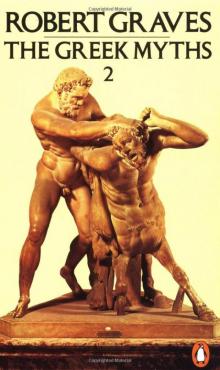 The Greek Myths, Volume2
The Greek Myths, Volume2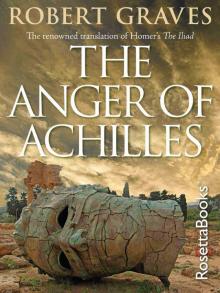 The Anger of Achilles: Homer's Iliad
The Anger of Achilles: Homer's Iliad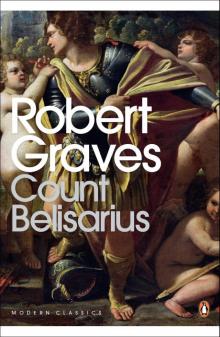 Count Belisarius
Count Belisarius The Twelve Caesars
The Twelve Caesars Complete Poems 3 (Robert Graves Programme)
Complete Poems 3 (Robert Graves Programme) Homer's Daughter
Homer's Daughter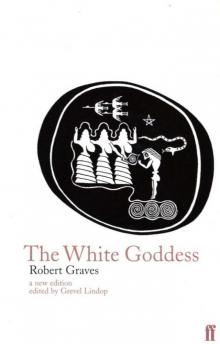 The White Goddess
The White Goddess Goodbye to All That
Goodbye to All That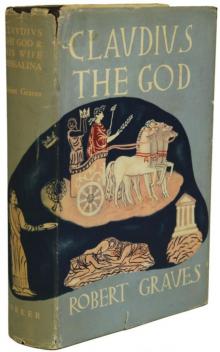 Claudius the God and His Wife Messalina
Claudius the God and His Wife Messalina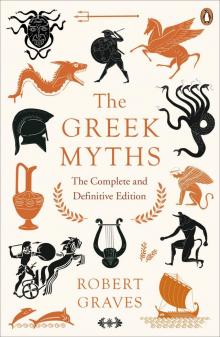 The Greek Myths
The Greek Myths I, Claudius
I, Claudius The Islands of Unwisdom
The Islands of Unwisdom Complete Short Stories
Complete Short Stories The Golden Fleece
The Golden Fleece They Hanged My Saintly Billy
They Hanged My Saintly Billy King Jesus
King Jesus Sergeant Lamb's America
Sergeant Lamb's America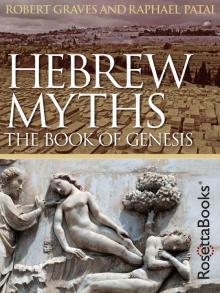 Hebrew Myths: The Book of Genesis
Hebrew Myths: The Book of Genesis Seven Days in New Crete
Seven Days in New Crete Proceed, Sergeant Lamb
Proceed, Sergeant Lamb Claudius the God
Claudius the God Wife to Mr. Milton
Wife to Mr. Milton The Complete Poems
The Complete Poems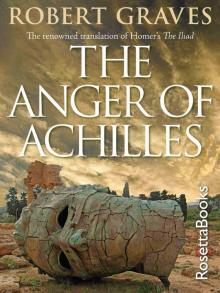 The Anger of Achilles
The Anger of Achilles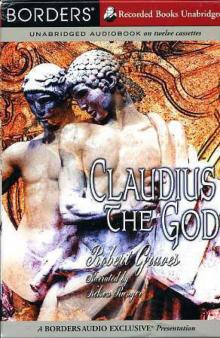 Claudius the God c-2
Claudius the God c-2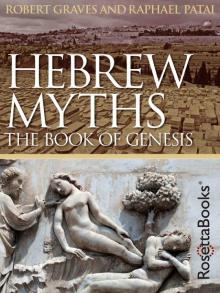 Hebrew Myths
Hebrew Myths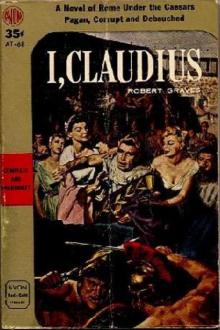 I, Claudius c-1
I, Claudius c-1 The Greek Myths, Volume 1
The Greek Myths, Volume 1